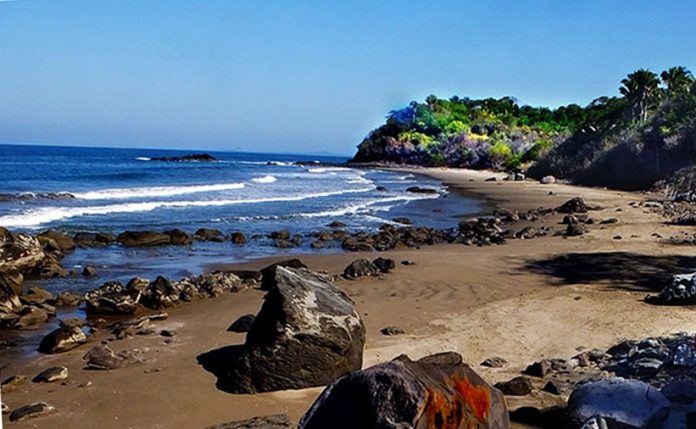Who hasn’t dreamed of stumbling upon a totally deserted, clean sandy beach? To make the dream more appealing, let’s add a bit of exotic jungle just above the sand, and — hidden in that jungle — a flat, shady, grassy spot to pitch a tent, with plenty of firewood lying all about.
Now, let’s include a rough road connecting this hidden paradise to the nearest highway.
“Enough!” you protest,” such beaches are only found in the movies!”
Cave explorers in Mexico, however, frequently end up in remote places where they often encounter the unexpected — which, on one occasion actually included just such a dream beach.
This means of course, that our story begins with a cave …
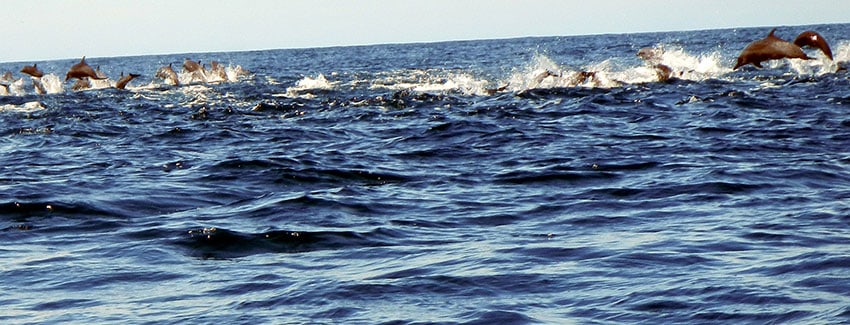
Many years ago, I was chatting with a shopkeeper in downtown Guadalajara. And when I mentioned my interest in exploring cuevas, his eyes widened. “I’m from Nayarit,” he told me, “and I remember a big cave in El Cerro del Toro, between Ixtapa and the beach at Platanitos.”
Naturally, we had to go take a look, enticed by the prospect of exploring a cave and then relaxing at a beach.
So, a few weeks later, We found ourselves in Nayarit. While driving through the town of Zacualpan, we happened to mention La Cueva del Toro to a lugareño (local) who immediately replied, “Oh, you mean La Cueva de La Tigra. Actually, it’s right here on the edge of town, but let me warn you: you need a rope to get into it. There’s a 20-meter drop right at the entrance, and then there are passages that go on forever. I swear you could walk all day and never reach the end of that cave!”
Well, we had come prepared for every sort of cave imaginable, and our informant patiently waited while we donned helmets, harnesses, ascenders and rappelling devices and pulled out bags full of rope.
Staggering under our loads, we proceeded along a faint, dusty trail under the blazing midday sun of this semitropical area. Our non-caving friends followed along, scratching their heads over our insistence on submitting ourselves (and them) to such torture instead of heading directly for the beach.
Of the various pieces of information our informant had given us about the cave, only one (its name) turned out factual. The “20-meter drop” was an easy-to-downclimb two-meter slope, and the “endless passages” added up to about 120 meters of beastly hot cave. The only movement of air inside there was caused by bat wings. Several holes in the floor indicated past efforts at guano mining. Drenched with sweat, we made a quick sketch of the cave and exited into the sizzling sunshine.
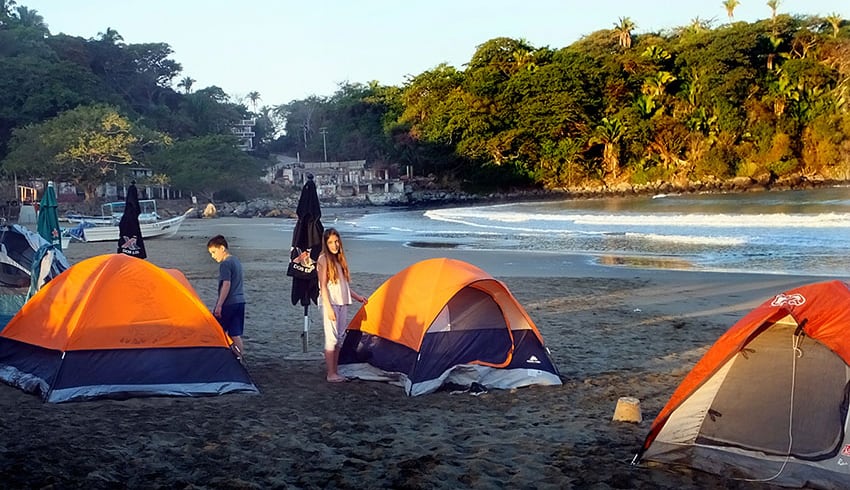
The next town we came to was Ixtapa. We found our way into it with ease, but getting back out of it and onto the road to Platanitos turned out to be a problem.
“Take that street,” offered a caballero sporting a thick black mustache.
We did so and found ourselves looking over the edge of a near precipice. Far below us, we could see nothing but a wide, rocky river. We backtracked and tried another informant.
“Bueno, you could try the next street over there.”
So we tried the next street and again ended up at the edge of the very same precipice.
“Where’s the road?” we asked yet another Ixtapian.
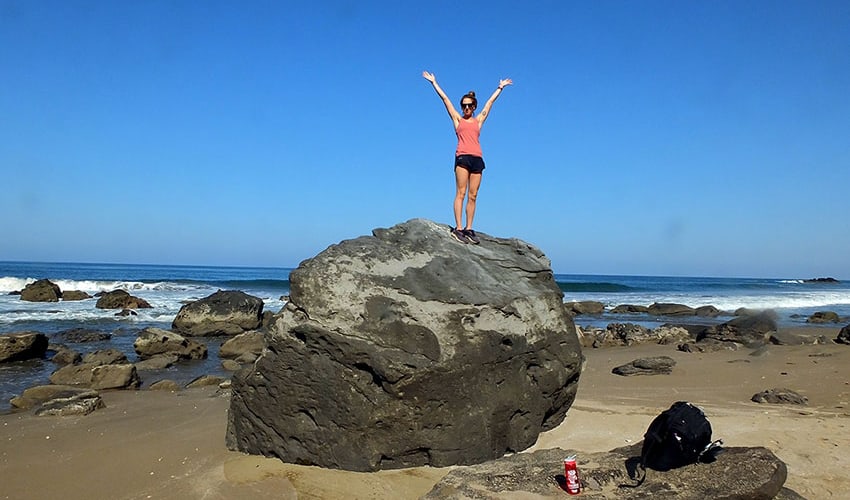
“That’s it down there,” answered our new informant, “Can’t you see it?” And the truth finally dawned upon us: the river was the road!
Clenching our teeth, we plummeted down the steep incline and somehow reached the bottom in one piece. Then we drove straight into the river — cautiously! From midstream, we could see in the distance the skeleton of a steel bridge under construction that promised a less daunting passage through Ixtapa in the future.
Platanitos, which means “little bananas,” turned out to be a delightful beach on a small bay, with a great view and several unpretentious, thatched-roof restaurants. After an inexpensive dinner of the freshest fish imaginable, we ambled north along the shore over a great heap of black volcanic rocks to walk off our delicious dinner.
To our astonishment, we soon came to a hidden beach: a nice stretch of lovely sand with not a soul to be seen anywhere. The only footprints we found were those of a raccoon.
Needless to say, we were nearly struck speechless when we discovered that this idyllic beach had a convenient camping area just above it, with a rough track offering access to the highway through an impressive stretch of lush jungle.
On top of that, just offshore, we could see dolphins leaping and frolicking in the sparkling water!
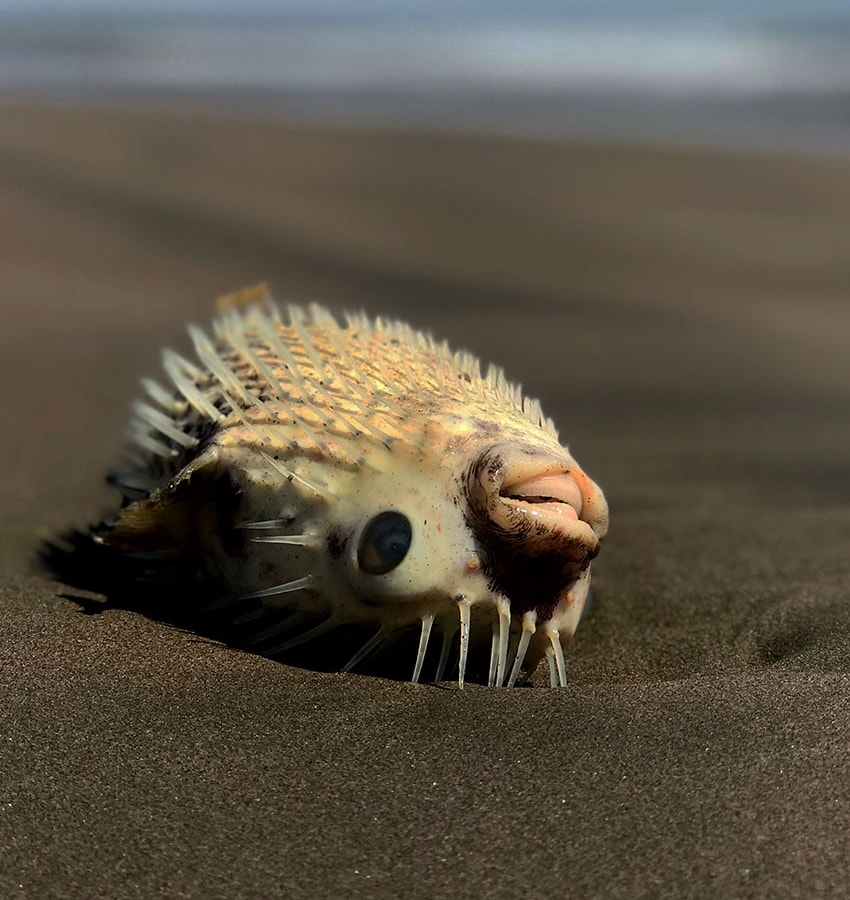
A few hours later, we had installed ourselves on our own private beach. All around our campsite there were cohune palms, the ones they use for making thatched roofs. In their shade, we hung our hammocks, watching for dolphins while swaying in the breeze and sipping ice-cold Negra Modelo.
Almost every morning, a boatful of fishermen would appear offshore, methodically lowering a long net. Their catch was never very large, and by the time they had thrown out the occasional stingrays and pufferfish, only a few buckets of edible fish remained. Some of these they were happy to sell to us less-successful fishermen. For a handful of pesos we bought enough to thoroughly satisfy all of us lazy cavers.
One morning, as we strolled past one of the pufferfish the pescadores (fishermen) had thrown out, our naturalist friend Chuy casually remarked, “These pufferfish, by the way, are quite curious: they have no teeth.”
“Oh really?” said my wife Susy, sticking her finger into a puffer’s open mouth.
Snap!
As Susy held up a now bleeding finger, Chuy continued his discourse.
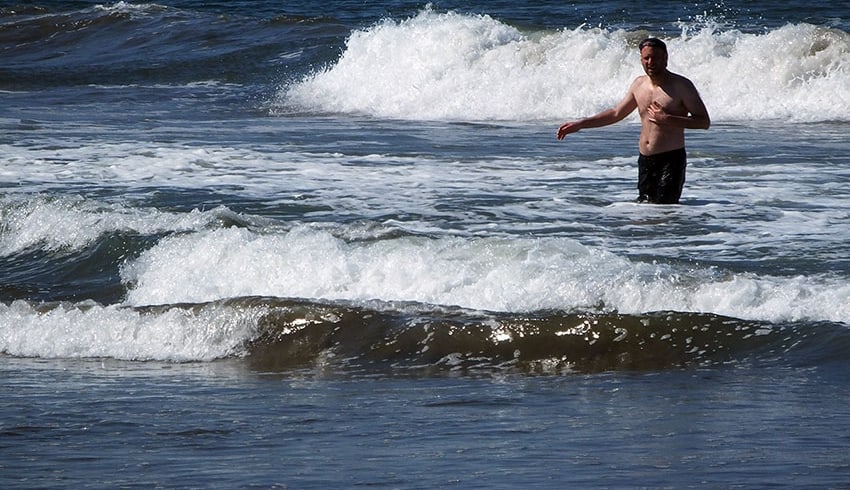
“… instead they have a kind of plate that serves the same purpose.”
And the Cueva del Toro?
The truth is that Dolphin Beach turned out to be so delightful and enticing that not a one of us could ever get out of our hammocks to go look for it!
A few weeks ago, I happened to be back in Nayarit, in the vicinity of Platanitos. When I told my compañeros about Dolphin Beach, they immediately insisted we go take a look at it.
“Amigos,” I replied,” I was last there over 30 years ago. It’s probably paved with asphalt and overrun with buildings by now.”
“Well, let’s check it out anyhow,” my friends insisted.
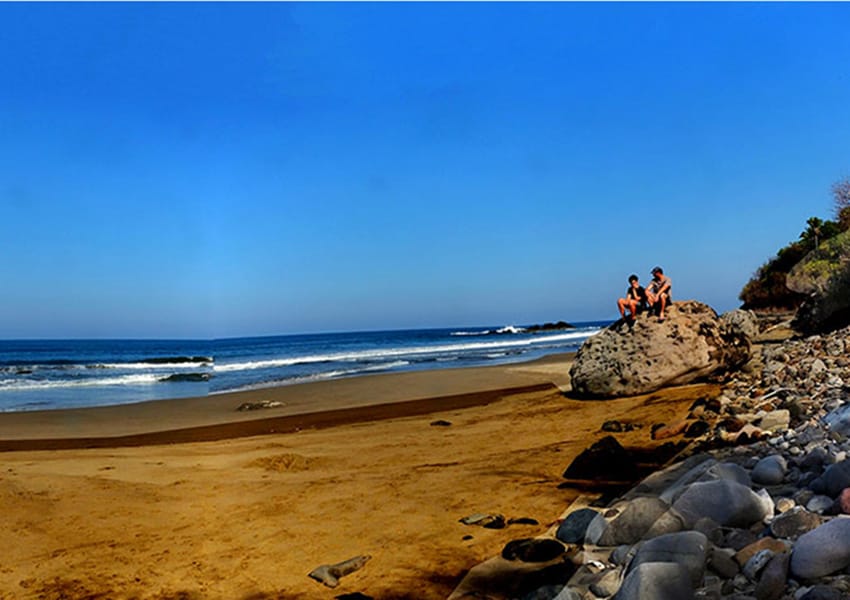
Because the tide was too high to follow the beach, we hiked north from Platanitos along the coastal highway — in the hot sun — until we came to that old, hard-to-spot, rough track that led us down, through the jungle, to beautiful, peaceful, Dolphin Beach, which, to my amazement, looked exactly as I remembered it.
In fact, the tracks we found on its pristine sands bore witness to no other visitor than that same raccoon of yesteryear — well, more likely its great-grandchild.
Want to see for yourself? First swear to leave the place just as you found it and then ask Google Maps to take you to “9Q57+23 Otates y Cantarranas, Nayarit,” where you’ll find the rough track that takes you down to the beach. And when you get there, remember to keep an eye out for the dolphins!
Dolphin Beach is one of 65 natural sites described in volumes I and II of Outdoors in Western Mexico by John and Susy Pint.
